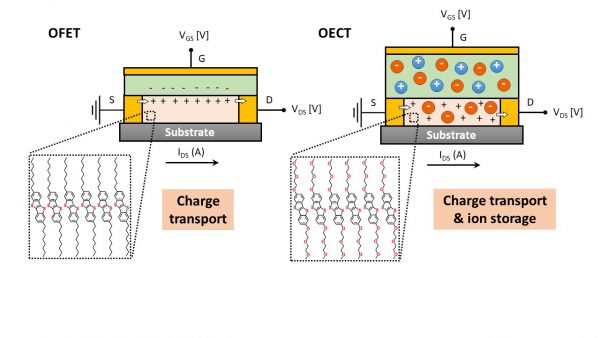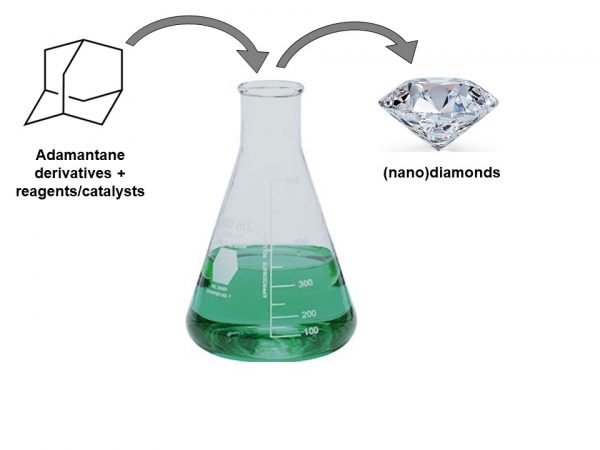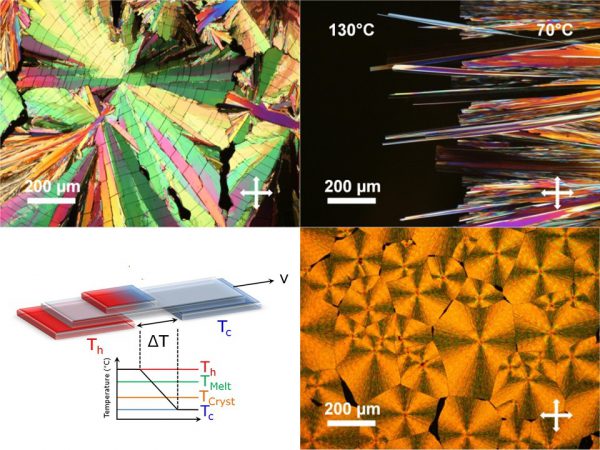Our major areas of research activity are related to the chemistry of functional molecular materials and their structural, thermal, optical, and electronic properties.
Specifically, we work on:
π-systems
We design, synthesize, and characterize π-systems for their use as semiconductors. Currently, we focus on thienoacenes that are among the best-performing materials for charge transport.
Performances of semiconductors are essentially quantified by the charge carrier mobility, µ (cm2/V.s). The state-of-the-art mobility values, measured in Organic Field Effect Transistors (OFETs), for organic semiconductors are on the order of 20 cm2/V.s. Our goal is to beat the limit of 100 cm2/V.s.
To this end, we try to design organic semiconductors that are resilient to thermal disorder by engineering their molecular structure and the shape of their frontier orbitals.
A somewhat connected line of research deals with the design and synthesis of organic semiconductors able to transport electrons and holes and to store ions to use them in Organic Electro-chemical Transistors (OECTs).
Such transistors that are able to process and to store information as synapses do, are key elements to create a new neuromorphic electronics.

Nanodiamonds
Diamonds are known for their extraordinary properties and for their use in jewelry.
Nanodiamonds, with size ranging from 2-5 nm, are of paramount interest for unprecedented applications in magnetic resonance imaging, quantum technologies, and biomedical applications.
What makes them particularly attracting are their defects, such as nitrogen vacancies. Defects confer them a fluorescence that is particularly sensitive to temperature and magnetic fields.
Unfortunately, nanodiamonds are difficult to synthesize in large amount because they require high-pressure and high temperature (HPHT) conditions.
We have recently elaborated a strategy to circumvent these inconvenient based on the chemistry of adamantane derivatives that serves as building blocks. Our ultimate goal would be to get rid of the use of pressure and be able to synthesize nanodiamonds near ambient conditions, like the synthesis of polymers.

Cristals and thin films
Our research activities on crystals is threefold. First, we engineer the crystal structure of organic semiconductors with side groups such as alkyl side chains.
By doing so, we modulate the electronic interactions between π-systems and tailor optical and electronic properties of organic semiconductors.

Second, we control the crystal growth of organic compounds by using specific non-equilibrium thermodynamic conditions.
On one hand, directional crystallization allows us to control the orientation/alignment of unit cells and to select specific polymorphs.
Thin films are preferred because they facilitate the visualization of crystal growth by microscopy and the characterization of crystal structure by X-ray diffraction methods.
In parallel to experimental studies, we rationalize our results from first principles.

Third, we are interested in chiral symmetry breaking upon crystallization. Non-equilibrium conditions can lead to the deracemization of atropisomers.
Currently, we study the use of external stimuli to tailor enantiomeric excess.

